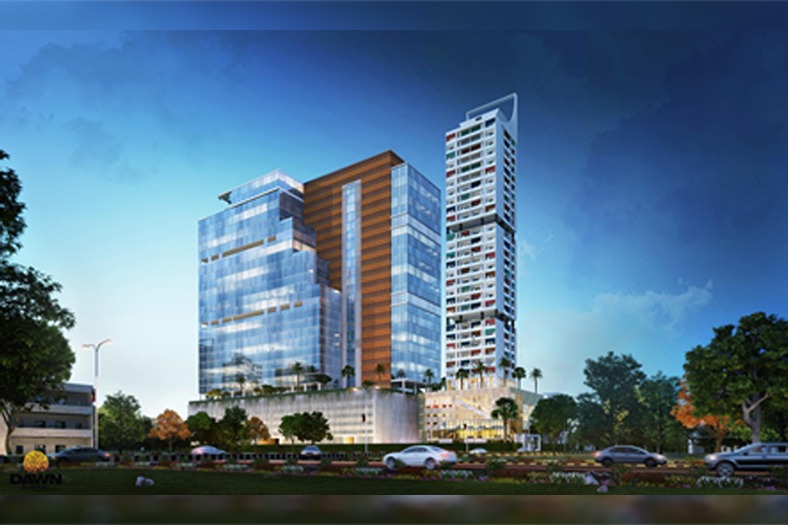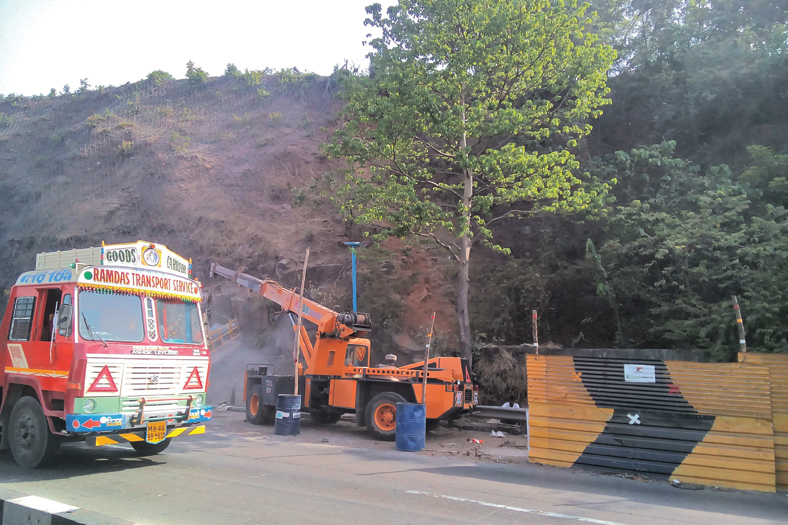LED’s taking up the lighting industry
An overview of the current state of lighting industry in India and how LED’s will be glowing in the future
Lighting industry in India has been growing steadily and constantly. With a shift in demand towards LED lighting the industry is growing at a much faster rate. It is reported that 20 per cent of the total electricity produced all over the world, is consumed by the lighting sector. With the recent policy by the government for rural electrifications the future of lighting industry seems to be shining at its peak.
Demand for lighting productsIndia is a power-starved nation. Although the retrofit luminaries still form a major part of lighting, recently the demand is shifting towards LED lighting. The increase in infrastructural development and impetus of the government towards energy conservation has propelled this demand. As the world is progressing towards modernisation, creating healthier environment and comfortable modernised living, quality of lighting has become an essential ingredient.
VP Mahendru, Chairman, EON Electric opines, “In past few decades lighting industry has witnessed various changes, from incandescent bulb to fluorescent bulbs and tubes and thereafter CFLs and from variety of metal halide lamps to progressively reach the current age of LED Lights. “The Indian lighting industry has seen a strong growth of 59 per cent growing from ` 8,500 crore to ` 13,500 crore in 2013. “The lighting industry is aggressively being driven by LED lighting and it is fair to suggest that LED lighting market will constitute close to 60 per cent of the overall lighting market at revenue of 65 billion globally by 2020,” says Naveen Saxena, Country Head, Opple Lighting India. The Indian LED industry was pegged at ` 1,925 crore out of the lighting industry’s aggregate turnover of ` 13,000 crore in 2013. The market size of Indian LED industry is now expected to touch ` 21,600 crore in the ` 35,000 crore lighting industry by 2020 on the back of government’s decision to switch to LED for all street lamps and public space lighting. “The government has identified LED as a key technology for energy conservation. The emerging townships and smart cities and increased consumer awareness are also propelling this demand,” says Yoshiyuki Kato, Director Lighting, Anchor Electricals India. In the years to come LED lighting will be primarily adopted as the best lighting method especially in the areas of general lighting, street lighting and other high-power industrial segments. Additionally, it may expand to India’s automotive sector as well.
TrendsThe market is growing at a rate of 38 to 40 per cent per year since last three years, considering the importance given to energy saving by the government. Due to growing awareness of the consumers towards efficiency and environment, there is a strong push towards sustainable lighting solutions in India.
“Smart and efficient lighting is gaining foothold in India, due to evolving consumer mind set, rise in disposable household income and an increased propensity to spend,” believes Mr Saxena. The Indian consumer over the last few years, has not only become more conscious of the environment, but also cognizant of the impact of good lighting and how it can create a great ambience. Mr Saxena further adds, “The latest emphasis is to create a perfect balance between efficiency and aesthetics in the LED products.“
Globally, fast-paced technological innovation is going on in order to make LEDs more efficient, eco-friendly and durable. For instance, LED street lights with sensors can not only be triggered ON and OFF or dimmed in accordance with the changing proximity of any individual, but can also be automatically put ON at the end of the day at sun set time and put OFF as the first rays of the sun show up brilliantly in the sky. LED Lights can now change colour of light they emit as per pre-organised plan apart from switching ON or dimming. LED Lights can also raise music or alarm as required. Mr Mahendru opines, “It is expected that in the near future LED lights will provide far more benefits, comfort and safety to human beings.”
Innovative products India is a price-sensitive market. There are many players in the Indian market offering wide range of products. The trend for architectural lighting is catching up in India. People want to decorate their houses or places with different types of lighting styles which are attractive, but at the same time efficient and cost effective.
Mr Kato says, “Panasonic LED is customising its product range in terms of the voltage and surge voltage to suit the Indian market and introducing products suiting the requirements of assorted spaces, across all price points.” He adds, ”While we have a range for retail that sells products delivering optimum value for money, we also have introduced the Smart Archi range of high end-architectural LED luminaires and Pro id range of professional LED luminaries last year. Both these products were considered as best in the globe in terms of peer differentiation and quality of light.”
Speaking about Opple’s range of product Mr Saxena states, “We are aiming to drive LEDification of Lighting. We want to enhance the lighting standards in India. Having state of the art technology that helps us produce good quality products at affordable prices.” Some of the unique features that OPPLE products offer include; flicker free, higher safety, due to non-emission of harmful UV and Infra-red rays and low UGR (Unified glare rating) to provide glare free comfort lighting for commercial spaces.Opple’s LED products have a zero maintenance cost due to exceptionally long lifespan and integrated construction. It offers over 200 LED products in various categories best suited for home, offices, retail, hospitality and industrial spaces. Some of its visionary products offered are Radar, Shining Moon and Star Series of LED Ceiling Lights.
“EON has been progressively working on continuous development, mass production and marketing not only for LED bulbs, tubes and street lights but also consistently developing variations of these LED lights to suit huge variety of consumers including residential offices, commercial buildings and street lights etc. to ensure greater safety and security for all consumers and respective property,” remarks Mr Mahendru.
Challenges hindering growthLED adoption is increasing but still is at a nascent stage in India. However, with the government push, it is expected to surpass a growth rate of 50 per cent over the next few years. There is a need to standardise lighting products, unorganised players get away with cheap and less efficient products due to absence of any standard policies applicable.“Limited product availability in India, high initial cost, absence of national technical standards for LEDs, leading to the import of sub-standard LED devices and lack of testing protocols and laboratories are some of the challenges which the lighting industry faces,” says Mr Saxena.
Commenting on the challenges Mr Mahendru says, “Within India there have been some unscrupulous importers who have been importing large volumes of these sub-standard LED lights from the above mentioned manufacturers, in consequence of which the importers and their one time customers become a natural easy prey for the poor quality of LED lights which they get and regret thereafter.” He suggests stringent norms in terms of energy-efficiency as well as manufacturing. Manufacturing cost is high, sales are low making the price for the end-consumer high, when it comes to standard products in India and hence the traditional lamps are being substituted with cheap Chinese products. Mr Kato says, “The Led market is flooded with imported Chinese product, being sold at a throw away price. The customer usually has no knowledge about how well a product will perform as the heart of a LED is its driver.”
Right approachThe right approach is needed by companies especially when the competition gets tough, providing good products is not just the thing required it should be cost effective as well to suit the demands of the cost sensitive buyers in India.
“Panasonic is world’s third largest lighting company and boasts more than 30,000 LED products under its portfolio. At present Anchor is watching the changing trends in the market as it imports Panasonic LED products from the parent facilities in Japan and other parts of the globe,” remarks Mr Kato. He adds, “As of now our contribution will be limited to marketing the technologies and light measurement indexes like “FEU.” Depending on the market momentum and standardisation of product quality standards, we may consider manufacturing LED products in India in the near future.”
Commenting on Opple’s business approach Mr Saxena comments, “We offer the best quality through our state of the art technology at an affordable price. Which help us drive adoption of OPPLE LED products, and increase our product uptake in the Indian market.” India has been and will continue progressing fast on the road to growth of good quality LED Lights of satisfactory performance for all consumers big or small. While Mr Mahendru opines,” EON’s impressive development of new, innovative, more efficient and cost effective LED Lighting products is the success mantra which has always guided EON Electric to grow from the very beginning to its highly successful present status as also for the coming years.”____________________________________________
It is expected that in the near future LED lights will provide far more benefits, comfort and safety to human beings.
VP Mahendru, Chairman, EON Electric __________________________________________________
The latest emphasis is to create a perfect balance between efficiency and aesthetics in the LED products.
Naveen Saxena, Country Head, Opple Lighting India_____________________________________________________
The customer usually has no knowledge about how well a product will perform as the heart of a LED is its driver.
Yoshiyuki Kato, Director Lighting, Anchor Electricals_________________________________________________
9
Cookie Consent
We use cookies to personalize your experience. By continuing to visit this website you agree to our Terms & Conditions, Privacy Policy and Cookie Policy.









